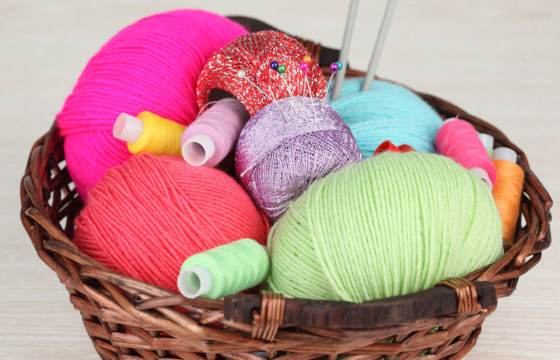Learning the Craft of Crocheting

Crocheting is for grannies! That’s the mindset of most people when they think of crocheting. However, this is actually extremely incorrect. Not only is it not done by just the elderly, it’s done on a lot of things. It’s even done on a lot of designer clothes.
Crocheting is not an activity made only for our grannies and for bitter spinsters. It can be done by everyone. Especially, now that clothing trends are now more inclined into the use of crocheted items, popular clothing designers are also smitten by crocheting.
However, crocheting is not only for the plain Jane. One has to have the patience and, of course, the time to be able to do anything crocheted. So how does one actually get herself learn to crochet?
It really is not a hard skill to learn. But it neither is an easy one. In order to get you going, all you need is a good crochet hook, yarns, measuring tape, yarn needle, some pins, and a lot of determination to finish a crocheting project.
Here is a rundown of tips on how to easily learn crocheting:
Hold the Yarn Like a Pro
For newbies in crocheting, holding a yarn could be quite a tricky job. Even if it only takes some time of getting used to, knowing how hold it properly and skillfully is not to be overlooked.
It may not be the easiest thing in the world to master, but it sure is worth it. The magnificent work you can complete with the help of crochet is amazing. If you have a little extra time to pick this up as a hobby, you wont regret it.
Here is how:
1. Let the yarn pass through your fingers upon holding it. This is how it is done: the little finger, then, beneath the ring finger, then, above the forefinger and the middle finger.
2. Another way to hold the yarn is to loop in the region of the little finger, and then, make it cross the forefinger.
3. Upon holding the hook, imagine how you would hold a pencil or a spoon. That’s how it should be held. In that position, it won’t be hard for you to heave the yarn from your fingers down to the loop in the hook.
As you go along the process of crocheting and you start to get the hang of it, you will learn your unique and most comfortable way of working with the yarn. Don’t be afraid to adopt a new method of holding it. It will help you become more of an efficient crochet craftsperson in the long run.
Size Matters When it Comes to the Hook and Yarn
One should not take for granted the skill of identifying the right hook and yarn to use in any crochet project.
Hooks are identified through different letters and numbers that correspond to certain sizes. In crocheting, the higher the number or letter of the hook, the thicker the hook is. As for yarns, their varieties are identified through names.
Resizing the Crochet Project Through the Pattern
To reduce the size of a project, it is as simple as deducting some stitches. One can skip a stitch in a row and continue with the next to reduce the size of the project. To enlarge a project, it is as easy as inserting more stitches in a row. One can easily join two stitches of the same row together. This will make one produce a solo stitch on the next row prior to it.
Reading a Pattern Like a Book
What can complicate the activities of one that is engaged in crocheting are the abbreviations on a pattern. The use of memory and logic can help a lot in surmounting this little crocheting obstacle. The outcome of being able to memorize these important abbreviations is a much faster pace in crocheting and more efficient hands.
1. Crochet patterns and instructions are worked usually in rounds or rows. It will be indicated on the pattern if you are doing or working in rounds, rows or mixture of both.
2. Crochet patterns and instructions are generally ranked according to difficulty level such as advanced, intermediate, easy or beginner. Choose a pattern with a difficulty level that suits your abilities. Then, increase the level of difficulty as your skill advances.
3. Count the stitches that you have made as you go on with your work to monitor the stitches needed on each round or row as required by the pattern.
4. Verify your gauge by crocheting a sample of about 4 X 4 inches in the pattern. When your gauge results into a larger size than what is on the pattern, then use a smaller hook; when your gauge is smaller, then use a larger hook.
When it’s time for you to actually accomplish a crochet project, make sure that you follow the instructions well and you make your patience a bit sturdier than before. Prepare your devices beforehand to ensure the smooth flow of your crocheting endeavor.
Now you know the steps of crocheting. You may not be a master at it right now, but at least you will know the basics. You can now start working at making magnificent work with this little hobby. Now, get to crocheting!







